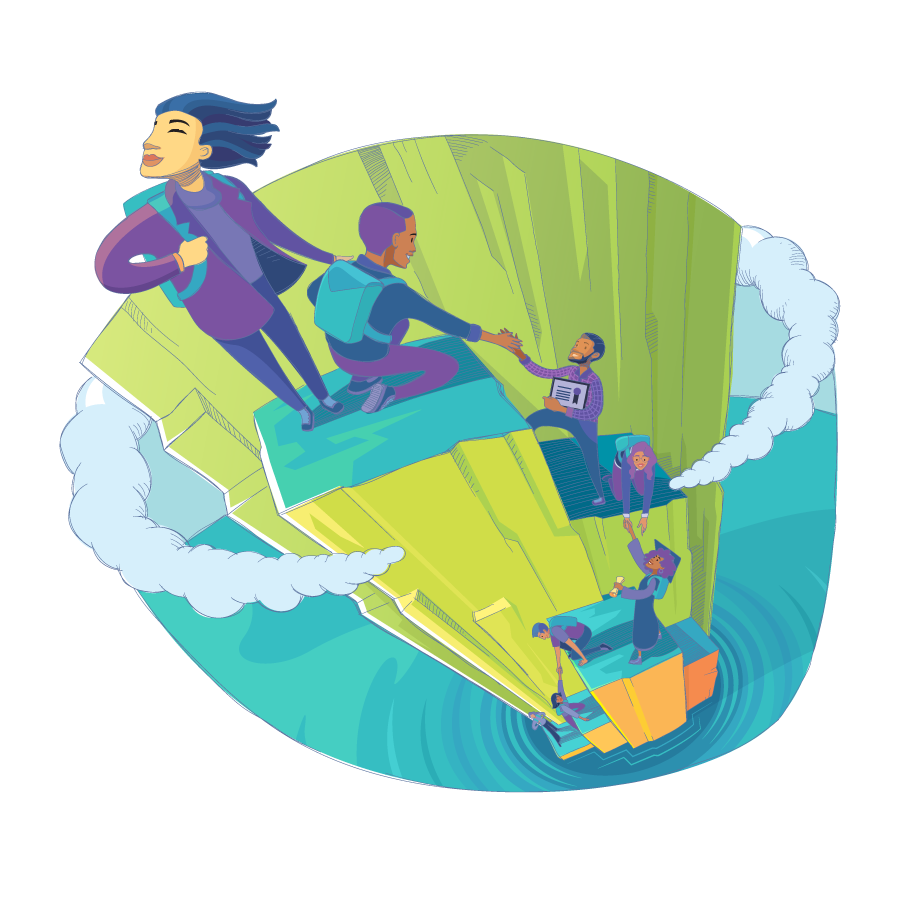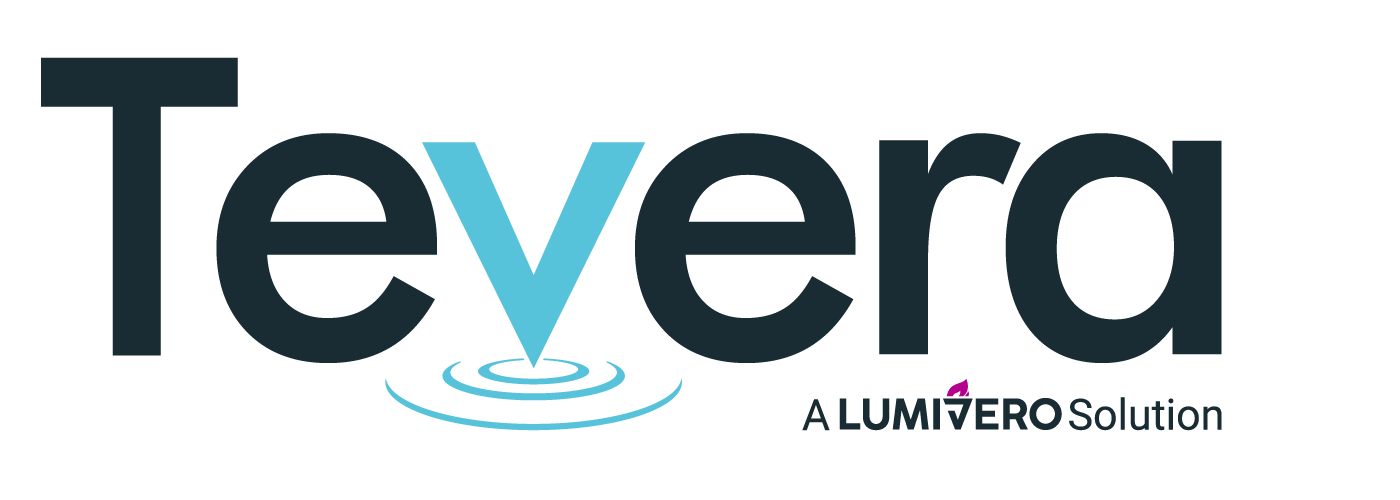What the Future of EdTech Will Look Like
Edtech isn’t the shiny new toy anymore. It’s a standard part of classrooms and administrative offices across the world. But with more edtech choices than ever, it isn’t enough to find a technology that works. It needs to work for you as a long-term investment in your students’ education, so you need a partner that can grow with you and give you the support and features your program deserves.
Choosing the right partner can be tough. After all, there are software systems for the classroom, for data gathering, for time-tracking, for reporting, and the list just keeps growing. Some software companies, like Tevera, do all of these. Some specialize in just one. Some apply their tools across all industries as a general, one-size-fits-all approach. We decided to specialize in counselor education and social work programs. There’s no right answer to picking an edtech tool, but there are ways to identify what criteria matters to you, your program and your students, so you can make an informed decision that will work for you for years to come.
Keep reading to explore what criteria to consider for each application and we’ll show you how Tevera fits into each.
EdTech In the Classroom
It seems like even preschoolers have new classroom apps every day. So why don’t secondary education students receive the same? The thing is, there are tools out there. It’s just that universities may not know about them or haven’t yet adopted them. Unfortunately for the programs that are behind on the digital curve, they’re falling behind and fast.
Most schools have programs like Blackboard or Canvas but stop short of embracing other tools that can enhance the learning experience.
How Tevera is Enhancing Classroom Learning
We help students keep track of their assignments and make it easier for professors to quickly review, grade, and give feedback on those assignments. By reducing the time faculty members spend chasing down late assignments, we’re enabling them to give higher quality feedback and, at the same time, easily compare the progress of their students in their class. For students, we built a system that holds all of their assignments, including feedback, forever. Not only does it help them learn but it also creates a one-stop-shop for resume creation and easy reference long after they’ve passed the class.
Behind the Scenes: Tech for Administrators
Students don’t realize how much happens behind the scenes of their program. Program administrators, assessment coordinators, and many more people are the wheels that keep your program running and your students learning. Which is why they deserve digital tools to ease their jobs, just like your students deserve the latest and greatest educational tools.
But what do these administrative digital tools look like? How can they help grease the wheels of your program?
How Tevera is Building Technology to Help Administrators
For us, it’s all about the data. We’ve heard from schools time and again that gathering data, tracking data, and reporting on that data is a headache. It’s time-consuming, labor intensive, and if you’re still using paper, spreadsheets, and faxes, it’s likely that some of the data gets lost along the way.
That’s why easy data gathering, use, and reporting is at the center of our solution. No more tracking down that one piece of paper a student submitted two months ago. Now, everything is stored in one, online location. Plus, reports only take a few clicks instead of weeks to put together. This is especially helpful for schools looking to become or maintain accreditation.
In the Field: EdTech for Field and Internships
Every program has some sort of internship program. Physicians have residency, business students have internships. Social work students have field, and counselor education students have internships and/or practicums.
However, unlike edtech tools for classrooms, there aren’t as many options for these real-life experiences. Programs that emphasize their hands-on learning opportunities are well-served when they consider adding a digital tool to their edtech toolbox. Features to look for when choosing one include enhanced communication, data and reporting capabilities, and how easy they make it for students and supervisors to connect.
How Tevera is Creating Technology to Enhance the Field and Internship Experience
We wanted to ease the burden on supervisors to give them more time back in their day. So we created easy ways to communicate with students and to report on their progress. No more losing sites because of how much extra time it takes to participate in a supervisory role.
We also enabled programs to generate reports on each site’s performance to make sure that they’re able to stay on top of what their students are experiencing.
Plus, we’re developing new ways for students to choose what field site or practicum experience they want by working with each of our customers to develop custom solutions.
The Importance of Data for Student Learning Outcomes and Strategic Decisions
Data is everywhere for a reason: it helps decision makers make better decisions. For schools, this can mean using it for looking at student learning outcomes and reporting on them for accreditation and student acquisition.
Maintaining Your Program’s Competitive Edge
Most students entering four-year programs were born after 2000. Even students entering masters and doctoral programs are late millennials. That means, they grew up with the internet, barely remember floppy disks, and asking them to fax is like asking them to dig up dinosaur bones. They expect technology in every aspect of their lives, including education.
Programs that don’t embrace digital tools are already having to answer to students who expect to be able to communicate with professors, find field placements, and submit assignments on their phones. With COVID-19, this expectation turned into a necessity.
How Tevera Prioritizes the Student Experience
- Mobile-friendly features that enable students to track time, communicate with supervisors, and submit assignments on the go.
- Life-long access to the software so they can keep track of their accomplishments long after graduation to make building their professional identity a breeze.
- Time-tracking all the way to licensure.
SOLUTIONS
RELATED POSTS
PRODUCT OVERVIEW
See how Tevera can elevate your program.
What the Future of EdTech Will Look Like
Edtech isn’t the shiny new toy anymore. It’s a standard part of classrooms and administrative offices across the world. But with more edtech choices than ever, it isn’t enough to find a technology that works. It needs to work for you as a long-term investment in your students’ education, so you need a partner that can grow with you and give you the support and features your program deserves.
Choosing the right partner can be tough. After all, there are software systems for the classroom, for data gathering, for time-tracking, for reporting, and the list just keeps growing. Some software companies, like Tevera, do all of these. Some specialize in just one. Some apply their tools across all industries as a general, one-size-fits-all approach. We decided to specialize in counselor education and social work programs. There’s no right answer to picking an edtech tool, but there are ways to identify what criteria matters to you, your program and your students, so you can make an informed decision that will work for you for years to come.
Keep reading to explore what criteria to consider for each application and we’ll show you how Tevera fits into each.
EdTech In the Classroom
It seems like even preschoolers have new classroom apps every day. So why don’t secondary education students receive the same? The thing is, there are tools out there. It’s just that universities may not know about them or haven’t yet adopted them. Unfortunately for the programs that are behind on the digital curve, they’re falling behind and fast.
Most schools have programs like Blackboard or Canvas but stop short of embracing other tools that can enhance the learning experience.
How Tevera is Enhancing Classroom Learning
We help students keep track of their assignments and make it easier for professors to quickly review, grade, and give feedback on those assignments. By reducing the time faculty members spend chasing down late assignments, we’re enabling them to give higher quality feedback and, at the same time, easily compare the progress of their students in their class. For students, we built a system that holds all of their assignments, including feedback, forever. Not only does it help them learn but it also creates a one-stop-shop for resume creation and easy reference long after they’ve passed the class.
Behind the Scenes: Tech for Administrators
Students don’t realize how much happens behind the scenes of their program. Program administrators, assessment coordinators, and many more people are the wheels that keep your program running and your students learning. Which is why they deserve digital tools to ease their jobs, just like your students deserve the latest and greatest educational tools.
But what do these administrative digital tools look like? How can they help grease the wheels of your program?
How Tevera is Building Technology to Help Administrators
For us, it’s all about the data. We’ve heard from schools time and again that gathering data, tracking data, and reporting on that data is a headache. It’s time-consuming, labor intensive, and if you’re still using paper, spreadsheets, and faxes, it’s likely that some of the data gets lost along the way.
That’s why easy data gathering, use, and reporting is at the center of our solution. No more tracking down that one piece of paper a student submitted two months ago. Now, everything is stored in one, online location. Plus, reports only take a few clicks instead of weeks to put together. This is especially helpful for schools looking to become or maintain accreditation.
In the Field: EdTech for Field and Internships
Every program has some sort of internship program. Physicians have residency, business students have internships. Social work students have field, and counselor education students have internships and/or practicums.
However, unlike edtech tools for classrooms, there aren’t as many options for these real-life experiences. Programs that emphasize their hands-on learning opportunities are well-served when they consider adding a digital tool to their edtech toolbox. Features to look for when choosing one include enhanced communication, data and reporting capabilities, and how easy they make it for students and supervisors to connect.
How Tevera is Creating Technology to Enhance the Field and Internship Experience
We wanted to ease the burden on supervisors to give them more time back in their day. So we created easy ways to communicate with students and to report on their progress. No more losing sites because of how much extra time it takes to participate in a supervisory role.
We also enabled programs to generate reports on each site’s performance to make sure that they’re able to stay on top of what their students are experiencing.
Plus, we’re developing new ways for students to choose what field site or practicum experience they want by working with each of our customers to develop custom solutions.
The Importance of Data for Student Learning Outcomes and Strategic Decisions
Data is everywhere for a reason: it helps decision makers make better decisions. For schools, this can mean using it for looking at student learning outcomes and reporting on them for accreditation and student acquisition.
Maintaining Your Program’s Competitive Edge
Most students entering four-year programs were born after 2000. Even students entering masters and doctoral programs are late millennials. That means, they grew up with the internet, barely remember floppy disks, and asking them to fax is like asking them to dig up dinosaur bones. They expect technology in every aspect of their lives, including education.
Programs that don’t embrace digital tools are already having to answer to students who expect to be able to communicate with professors, find field placements, and submit assignments on their phones. With COVID-19, this expectation turned into a necessity.
How Tevera Prioritizes the Student Experience
- Mobile-friendly features that enable students to track time, communicate with supervisors, and submit assignments on the go.
- Life-long access to the software so they can keep track of their accomplishments long after graduation to make building their professional identity a breeze.
- Time-tracking all the way to licensure.
What the Future of EdTech Will Look Like
Edtech isn’t the shiny new toy anymore. It’s a standard part of classrooms and administrative offices across the world. But with more edtech choices than ever, it isn’t enough to find a technology that works. It needs to work for you as a long-term investment in your students’ education, so you need a partner that can grow with you and give you the support and features your program deserves.
Choosing the right partner can be tough. After all, there are software systems for the classroom, for data gathering, for time-tracking, for reporting, and the list just keeps growing. Some software companies, like Tevera, do all of these. Some specialize in just one. Some apply their tools across all industries as a general, one-size-fits-all approach. We decided to specialize in counselor education and social work programs. There’s no right answer to picking an edtech tool, but there are ways to identify what criteria matters to you, your program and your students, so you can make an informed decision that will work for you for years to come.
Keep reading to explore what criteria to consider for each application and we’ll show you how Tevera fits into each.
EdTech In the Classroom
It seems like even preschoolers have new classroom apps every day. So why don’t secondary education students receive the same? The thing is, there are tools out there. It’s just that universities may not know about them or haven’t yet adopted them. Unfortunately for the programs that are behind on the digital curve, they’re falling behind and fast.
Most schools have programs like Blackboard or Canvas but stop short of embracing other tools that can enhance the learning experience.
How Tevera is Enhancing Classroom Learning
We help students keep track of their assignments and make it easier for professors to quickly review, grade, and give feedback on those assignments. By reducing the time faculty members spend chasing down late assignments, we’re enabling them to give higher quality feedback and, at the same time, easily compare the progress of their students in their class. For students, we built a system that holds all of their assignments, including feedback, forever. Not only does it help them learn but it also creates a one-stop-shop for resume creation and easy reference long after they’ve passed the class.
Behind the Scenes: Tech for Administrators
Students don’t realize how much happens behind the scenes of their program. Program administrators, assessment coordinators, and many more people are the wheels that keep your program running and your students learning. Which is why they deserve digital tools to ease their jobs, just like your students deserve the latest and greatest educational tools.
But what do these administrative digital tools look like? How can they help grease the wheels of your program?
How Tevera is Building Technology to Help Administrators
For us, it’s all about the data. We’ve heard from schools time and again that gathering data, tracking data, and reporting on that data is a headache. It’s time-consuming, labor intensive, and if you’re still using paper, spreadsheets, and faxes, it’s likely that some of the data gets lost along the way.
That’s why easy data gathering, use, and reporting is at the center of our solution. No more tracking down that one piece of paper a student submitted two months ago. Now, everything is stored in one, online location. Plus, reports only take a few clicks instead of weeks to put together. This is especially helpful for schools looking to become or maintain accreditation.
In the Field: EdTech for Field and Internships
Every program has some sort of internship program. Physicians have residency, business students have internships. Social work students have field, and counselor education students have internships and/or practicums.
However, unlike edtech tools for classrooms, there aren’t as many options for these real-life experiences. Programs that emphasize their hands-on learning opportunities are well-served when they consider adding a digital tool to their edtech toolbox. Features to look for when choosing one include enhanced communication, data and reporting capabilities, and how easy they make it for students and supervisors to connect.
How Tevera is Creating Technology to Enhance the Field and Internship Experience
We wanted to ease the burden on supervisors to give them more time back in their day. So we created easy ways to communicate with students and to report on their progress. No more losing sites because of how much extra time it takes to participate in a supervisory role.
We also enabled programs to generate reports on each site’s performance to make sure that they’re able to stay on top of what their students are experiencing.
Plus, we’re developing new ways for students to choose what field site or practicum experience they want by working with each of our customers to develop custom solutions.
The Importance of Data for Student Learning Outcomes and Strategic Decisions
Data is everywhere for a reason: it helps decision makers make better decisions. For schools, this can mean using it for looking at student learning outcomes and reporting on them for accreditation and student acquisition.
Maintaining Your Program’s Competitive Edge
Most students entering four-year programs were born after 2000. Even students entering masters and doctoral programs are late millennials. That means, they grew up with the internet, barely remember floppy disks, and asking them to fax is like asking them to dig up dinosaur bones. They expect technology in every aspect of their lives, including education.
Programs that don’t embrace digital tools are already having to answer to students who expect to be able to communicate with professors, find field placements, and submit assignments on their phones. With COVID-19, this expectation turned into a necessity.
How Tevera Prioritizes the Student Experience
- Mobile-friendly features that enable students to track time, communicate with supervisors, and submit assignments on the go.
- Life-long access to the software so they can keep track of their accomplishments long after graduation to make building their professional identity a breeze.
- Time-tracking all the way to licensure.



















